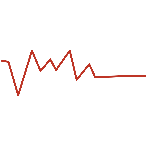Nerve Conduction Studies (NCS) and Electromyography (EMG)
- NCS and EMG are done to test muscles and nerves.
- It is an in-office procedure and does not require hospitalization.
- On average, an EMG takes anywhere between 30 minutes and 2 hours.
- It can be done at any time during the day.
- EMG is a test like an EKG or an X-ray. EMG is not a treatment.
Preparation:
- Few preparations are needed on the day you have an EMG.
- Please notify your physician if you are taking a blood thinner (aspirin, plavix,
coumadin, lovenox, etc) as there is a chance of bleeding in to your muscles during
needle EMG.
- Please do not apply any lotion, cream or ointment on the day of test.
- You will be required to change into a gown for the test.
- You can have regular meals before the test.
- You can drive yourself.You can go back to work after the test.
- Take all your medications on the day of the test.
- If required, you can take pain medication (Tylenol, Motrin) before the test.
- No sedation is given during the test.
Procedure:
- During this test, you will be lying on an examination table, next to an EMG machine
(which looks like a laptop or desktop computer). The test consists of two parts.
At times one may be done without the other.
Nerve Conduction Studies
- The first part is called Nerve Conduction Studies.
- In this part brief electrical shocks are delivered to your arm or leg similar to
a “funny bone feeling”, one gets when the elbow hits a hard surface.
- The procedure consists of stimulating a nerve and the response is recorded by the
electrodes.
- The strength of the current varies and the electric shock at time s may be uncomfortable.
- As the electric stimulation is for a brief duration there is no discomfort in between
stimulations and will not last long.
- The response is recorded on the computer and can be observed on the computer screen.
- As there are several nerves in a limb, the procedure is repeated to test the different
nerves.
Electromyography
- The second part of the test is called Needle electromyography.
- A needle is stuck into different muscles and the response is recorded on the computer
screen.
- The needles are thin and very fine.
- They are thinner than the needles used to draw blood.
- Usually 5-6 muscles are tested in each limb and at times other muscles in the body
may be tested depending on the diagnosis.
- No electric shocks are delivered at time of the needle EMG test.
Results:
The test results will be ready later that day and will be faxed or mailed to your
primary care physician and the referring physician.





